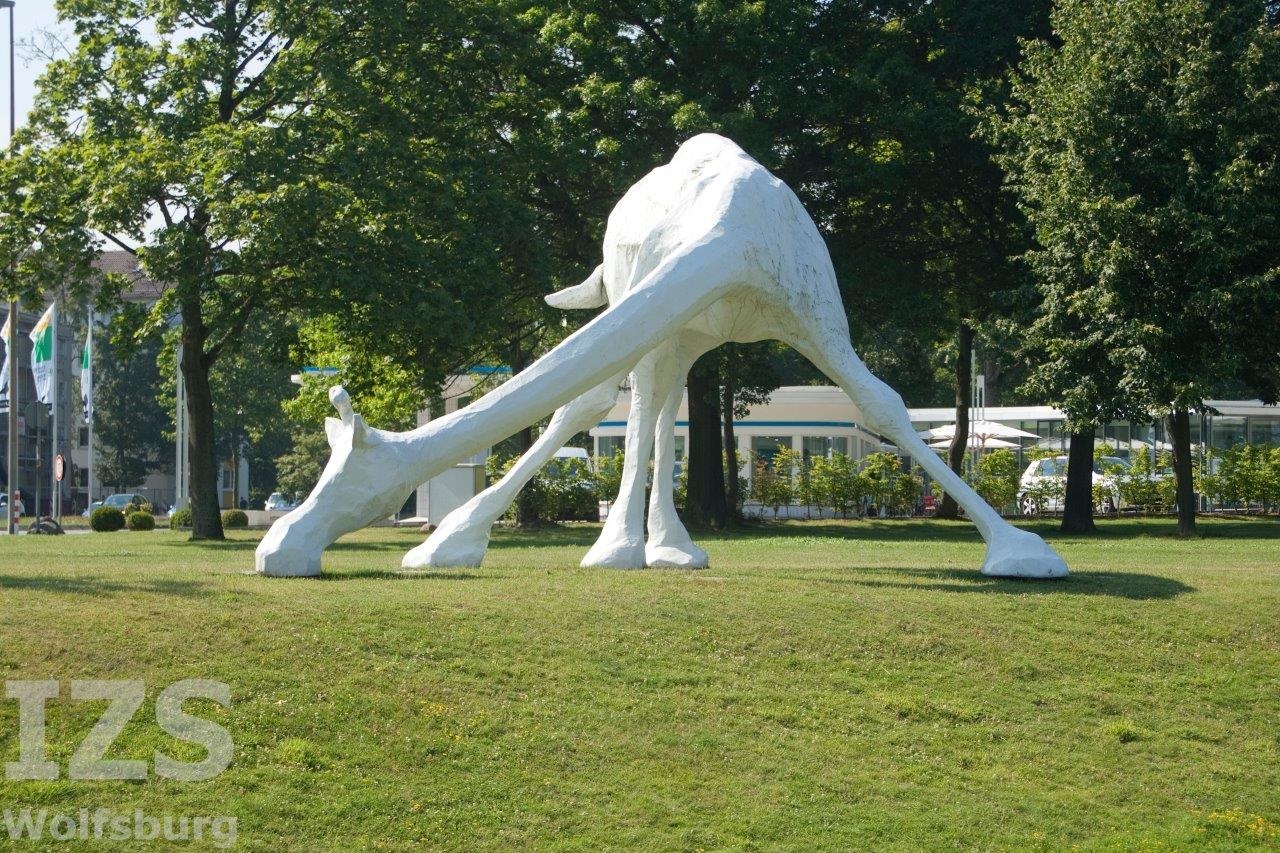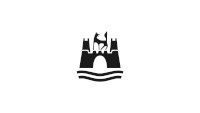Giraffe, Sina Heffner (2009)
From Maik Ullmann
Sina Heffner,-__-0000-__- born 1980 in Bielefeld, studied Fine Arts at the Braunschweig University of Art between 1998 and 2004 and graduated with a diploma. In 2005, the sculptor was a master student of Prof. Thomas Virnich. Since then, she has received scholarships from the German National Academic Foundation and the Worpswede and Stuhr-Heiligenrode artist residencies, as well as numerous prizes such as the Gustav Weidanz Prize (Halle an der Saale) and the Gifhorn City Art Prize. Her works have been shown in solo exhibitions at the Moritzburg Art Museum, the Tondern Art Museum in Denmark and the Flensburg Municipal Museum, among others, and have been installed in public spaces in several cities - including her sculpture Giraffe in Wolfsburg (Fig. 1).

MU Dear Ms. Heffner, if we take a look at your own Internet platform and the short biographical text on the website of the Institute for Architecture-Related Art at the Technical University of Braunschweig, one thing is particularly striking: your numerous references to nature and fauna.
SH The interface between humans and animals has occupied me for years. Where do habitats intertwine? Experiences of nature, impressions, these images that have been stored in me since childhood are the starting point of my artistic approach. I take up familiar things and place these images in new contexts. This results, for example, in walk-in, fictitious living spaces in which people can re-position themselves in real space - as with my sculpture of a giraffe, which can be seen in the urban space in Wolfsburg.
MU Why don't you tell us the story of how the giraffe sculpture came about?
SH Dr. Hans-Joachim Throl, Chairman of the Art Advisory Board of the City of Wolfsburg, and the former City Planning Councillor Monika Thomas invited me to a meeting at the beginning of 2009 to talk about possibilities and ideas for a sculpture in public space. Initial drafts and ideas for a suitable location emerged. At the foot of the Klieversberg, near Braunschweiger Straße and the planetarium, I found an interesting urban situation. Here I saw the potential to redefine the location through an artistic intervention. The exciting thing is that you can encounter this place from very different perspectives: fleetingly by car, by bike and from the perspective of a pedestrian, at eye level or looking down from the underpass.
I fleshed out my design and presented the models to the culture committee in summer 2009. This is where the decision to realize the project was made and I began with the implementation.
MU You will have expected the question, but I'll ask it anyway. Giraffe reflection, giraffe skin, or the giraffe in Wolfsburg ... Why are these graceful cloven-hoofed animals so present in your portfolio?
SH Using the giraffe as a starting point is based on the shape of this animal with its long limbs. The sculpture for the city of Wolfsburg clearly shows how space-creating it can be. On the one hand, it defines the surrounding area (4.50 meters × 4.00 meters) and creates its own physically perceptible space through its posture. At the same time, it acts as a disruptive factor, as an irritation in the urban space, perhaps allowing its viewers to take a new look at the place surrounding it.
MU What material did you use to make the sculpture and what might have influenced your decision-making process?
SH I was guided by the idea of a fleeting appearance, not a monumental assertion of material, but the impression of a sketch, a paper draft. The color serves as an abstracting moment, it creates distance to the real giraffe and underlines my desire for a filigree form that plays with light and shadow.
The work has a steel substructure on the inside, above which the form is modeled. The sculpture was then laminated with three layers of fiberglass-reinforced plastic and finally painted. The sculpture was built as a plug-in system so that it could be transported in four individual parts and assembled on site.
MU You say giraffe is intended as an irritation or disruptive factor (Fig. 2). The sculpture is intended to exist detached from the city itself. How did you perceive the public debate at the time?-__-0000-__-

SH I think any kind of public debate is right and exciting, otherwise you wouldn't be allowed to place an object in public space.
The interview was conducted by Maik Ullmann on June 18, 2020 in Braunschweig.
-__-0000-__- Museumsberg Flensburg (ed.), Sina Heffner. One exhibition, two countries, three places. Flensburg 2016; Sina Heffner (ed.), Sina Heffner. Guest at the Natural History Museum. Snails, jellyfish, insects, birds, skeletons, fossils, trophies. Brunswick 2011.
-__-0001-__- At the time, some people in Wolfsburg were astonished that a sculpture of an oversized giraffe had been erected near the Scharoun Theater. Apparently, people wanted a wolf rather than a giraffe, see: "Kunst: Lieber Wolf als Giraffe?" In: Wolfsburger Allgemeine Zeitung from October 30, 2009. Another letter to the editor reveals that a reference to the car manufacturer Volkswagen AG would have made more sense to the author: "A giraffe at the entrance to the Autostadt! Purely 'coincidental' and also likeable (30,000 euros). It makes the chickens laugh." "Giraffe - the chickens are laughing", in: Wolfsburger Nachrichten of July 27, 2009. As an opinion poll conducted by Wolfsburger Nachrichten on the giraffe sculpture on October 29, 2009 shows, there were equally positive comments on Heffner's sculpture. All respondents liked the sculpture: "I like the giraffe. It fits well in this spot. Children in particular will enjoy it. They love animals. They can't do anything with an abstract figure."
